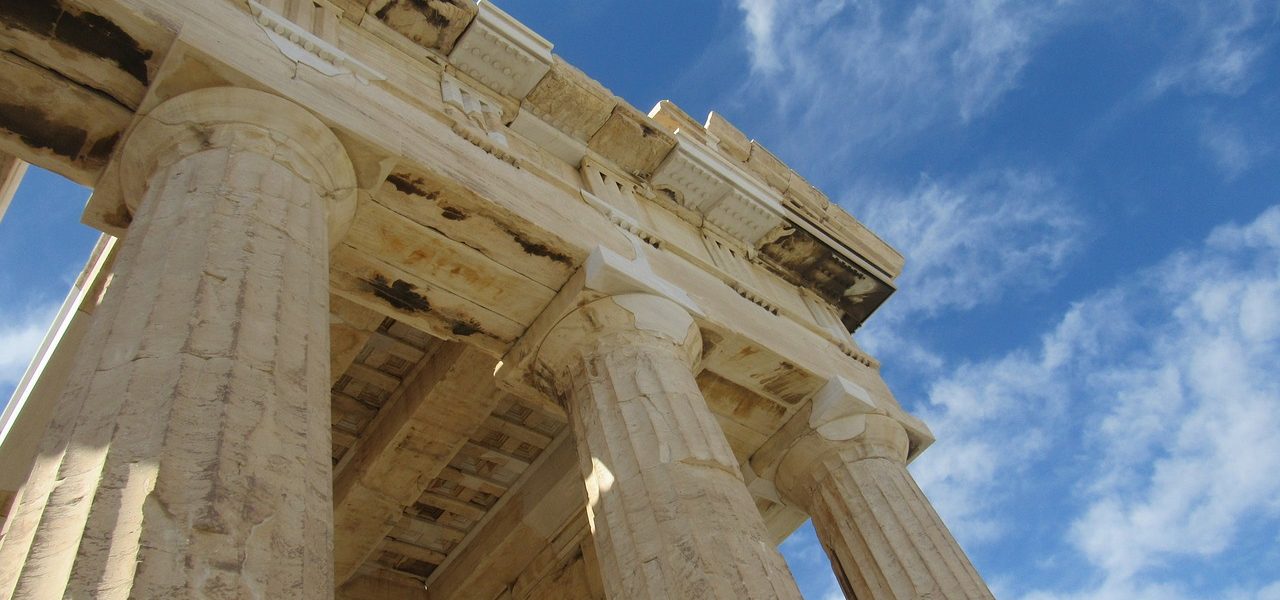Home › Forums › Ancient Civilizations › Greek view of gender
- This topic has 4 voices and 17 replies.
-
AuthorPosts
-
October 31, 2008 at 6:02 am #1362
 PhidippidesKeymaster
PhidippidesKeymasterWhile we find Greek statues that are perfect in form and build, archaeological evidence shows that Greeks themselves were not so perfect. The statues that we have were not meant to depict actual people, but instead the idealized form of the male body. As we know the Greeks of Athens celebrated homosexual practices and pederasty, and a few articles I have been reading lately dealt with this issue. Virility was thought to have been reflected by three things in male bodies – beauty, youth, and bodily strength. Perhaps because of this, athletic events, at which athletes competed in the nude, were considered the “high events” at which Athenian men would get their pleasure by gazing on athletes (in addition to later on-goings which I won't get into here). It's interesting that this idealism in the male body was accompanies by an misogynistic-like culture that developed in Greece. Women were clearly considered inferior - whether it be in strength or intellect. They were necessary to society of course, but they were not considered to be part of the Greek bodily ideal. Unlike today in which male-dominated societies would be presumed to be ardently heterosexual, the level of Greek homosexuality and male domination seems to have gone hand-in-hand.
December 16, 2008 at 4:50 pm #13821 skiguyModerator
skiguyModeratorWhat about all those temples to goddesses though?
December 16, 2008 at 5:20 pm #13822 PhidippidesKeymaster
PhidippidesKeymasterThat is a good question, one of which I'm sure there's an answer to (though which I do not have). The development of Greek goddess mythology might post-date the development of Greek (male) god mythology, or the standard of respect to deities might simply have been different than that given to humans. One thing that is illuminating in regard to the way Greeks viewed males and females is the way they were represented in sculpture. You'll notice in Greek statues that whereas the male is often depicted as "heroic nude" early on in Greek history (to the 7th or 6th century B.C.), the female nude is not depicted until later on (I believe 4th or 3rd century B.C.). And rather than being unashamed of her nudity like the male statue, she is ashamed and attempts to hide it. The Greeks were calculating. Interesting indeed.
December 16, 2008 at 5:30 pm #13823 scout1067Participant
scout1067ParticipantI have always been under the impression that the greeks thought pretty much the same way modern Arabs think. As I was told by many Iraqis:
Women are for making babies, men are for pleasure.
January 11, 2009 at 12:38 am #13824 skiguyModerator
skiguyModeratorPerhaps because of this, athletic events, at which athletes competed in the nude, were considered the "high events" at which Athenian men would get their pleasure by gazing on athletes (in addition to later on-goings which I won't get into here).
I assume you are talking about the spectators here. I think the reason why athletes competed in the nude had to do more with religious purity and mind/body harmony than with entertaining the homosexual spectators (although I'm sure that was part of it). Question about the art, one of my souces says that when looking at the paintings/sculptures, it is easy to identify the athlete by his nakedness. Now seeing that the athletes trained all their lives for competition, I don't think it's all that unreasonable to say they would be in excellent shape. With this in mind, can one perhaps safely assume that the perfect looking nude found on the sculptures wasn't really an idealized depiction of the male body, it was an actual athlete?
January 11, 2009 at 2:37 am #13825DonaldBaker
ParticipantWell another way of looking at it is, once stripped nude, there is symbolically only man vs man where social station cannot be seen during the contest. Both men are at their most equal when all the trappings of class status are removed.
January 11, 2009 at 12:25 pm #13826 skiguyModerator
skiguyModeratorThat's perhaps correct, but slaves and non-citizens couldn't compete. Plus the victors immediately received fame and a higher class status. Did you know they coated themselves in oil then covered their bodies with sand before each competition? ??? I have to research that further to find out the significance of that ritual. A lot of the repeat victors became objects of cult worship after their death and had temples built to them. It's kind of interesting how religious the games were. It's also interesting how much similarity it has to today's “worship” of some athletes. (I wonder where they're gonna build that Michael Phelps temple ;D ).
January 11, 2009 at 4:21 pm #13827DonaldBaker
ParticipantIn Homeric tradition, the competition was among warriors in celebration of a military victory or the death of a great hero in his honor. I suppose kings used the games to establish the pecking order of their warriors as the Greeks loved to assign ranks to everything from gods to cities to men in general.
January 11, 2009 at 4:44 pm #13828 skiguyModerator
skiguyModeratorHmm, do you have links or any references to Homer's writing that shows this? My first impression was that these games were about warriors and warrior training, but actually I'm surprised at how much the Games are NOT about war. What about that truce they agreed on so they could travel to the competitions without any problems?(maybe this should be a new thread since this is going off topic?)
January 12, 2009 at 4:11 am #13829 PhidippidesKeymaster
PhidippidesKeymasterI think the reason why athletes competed in the nude had to do more with religious purity and mind/body harmony than with entertaining the homosexual spectators (although I'm sure that was part of it). Question about the art, one of my souces says that when looking at the paintings/sculptures, it is easy to identify the athlete by his nakedness. Now seeing that the athletes trained all their lives for competition, I don't think it's all that unreasonable to say they would be in excellent shape. With this in mind, can one perhaps safely assume that the perfect looking nude found on the sculptures wasn't really an idealized depiction of the male body, it was an actual athlete?
The problem is that actual Greeks did not necessarily look like Greek statues. Archaeology has found that actual Greeks looked different (e.g. I think they tended to be shorter and/or less proportioned than what statues suggest).
January 12, 2009 at 11:36 am #13830 skiguyModerator
skiguyModeratorFeel free to jump all over me with this, but here's what my argument would be. The accounts of Olympic wrestling champion Milo of Kroton suggest that he was a big guy, or at least suggest that he was very strong (he won 6 consecutive competitions). Diod. 12.9
...the Crotoniates opposed them with one hundred thousand under the command of Milo the athlete, who by reason of his great physical strength was the first to put to flight his adversaries. [6] For we are told that this man, who had won the prize in Olympia six times and whose courage was of the measure of his physical body, came to battle wearing his Olympic crowns and equipped with the gear of Heracles, lion's skin and club; and he won the admiration of his fellow citizens as responsible for their victory.
Perhaps the artists used these bigger males as models of the ideal male, especially seeing that there perhaps weren't too many of them? I realize this is being speculative here, but if the bigger guys were few and far between, then maybe that made them more the objects of admiration and idealism?
January 13, 2009 at 1:59 am #13831 PhidippidesKeymaster
PhidippidesKeymasterThat's a good argument. I don't know a ton about this topic, but it was my professor (who is an expert in Greek vase painting) who brought up the point that I mentioned earlier about the idealism of the statues. To this I would have to add that the Greeks didn't only make statues of athletes, but also of gods and goddesses, and I would imagine that such depictions would have been idealized. Could some statues of athletes have been based on the actual athletes? Perhaps...I don't know enough to say for sure one way or another, and I don't know if they only based certain features on the athletes (e.g. hair, head, eyes, etc.). But think about this - successful athletes aren't always the ones with the most perfect bodies...perhaps the best wrestler had shorter legs, or a bit of a belly, etc. If Greek statues were realistic in nature, rather than idealistic, wouldn't it be likely that we would see at least some examples of Greek athlete statues with less-than-ideal forms?
January 13, 2009 at 12:25 pm #13832 skiguyModerator
skiguyModeratorDo you think the statue in this link is an idealized depiction or an actual likeness of the athlete? (you can click on the statue pic for a larger view)Trivia: what is that thing called that he's holding and what is it used for?
January 13, 2009 at 2:12 pm #13833 scout1067Participant
scout1067ParticipantI would say that the depiction is somewhat idealized. But the the Greeks dont have a monopoly on Idealizing the Human figure. Realistic depictions of the human figure are rare. even in modern art.
Trivia: what is that thing called that he's holding and what is it used for?
It is a strigil which was used to strip the oil and dirt from the body after bathing.
January 13, 2009 at 3:30 pm #13834 skiguyModerator
skiguyModeratorscout, you get a 100 on that quiz.More stuff on size of athletes.LINK (page 86-87 just in case link doesn't go directly to those pages)No mention of appearance, but my opinion is, knowing the boxing/wrestling matches sometimes lasted for 3 hours, there were multiple competitions by the same athlete on the same day, and they trained all their lives, I'd say one would have some pretty good abs after all that. 😀
-
AuthorPosts
- You must be logged in to reply to this topic.


